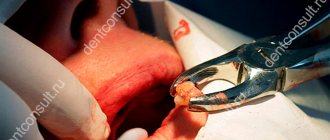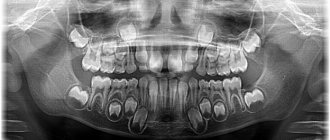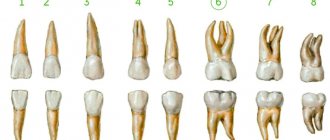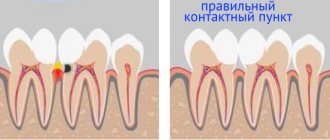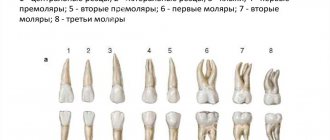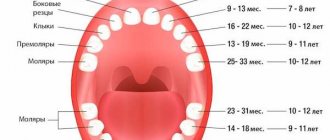Content
hide
1 Why is it important to treat baby teeth on time?
2 Features of filling baby teeth in children
3 Is silvering teeth an alternative method?
4 Cost of filling baby teeth
5 Technical points
6 Why is it necessary to fill teeth?
7 More about anesthesia
8 What to do if you don’t want to fill your baby teeth?
Caring for children's teeth is an acute and problematic issue. How many things violate children's oral hygiene: frequent consumption of sweets, violation of a healthy diet, irregular teeth brushing. The result is diseases of baby teeth, unpleasant symptoms and, of course, a visit to the dentist. This is stressful for both adults and children.
Parents worry about the baby, but the child is simply afraid of unpleasant and unfamiliar sensations. Fortunately, in modern dental clinics, doctors find an approach to a young patient, creating a friendly atmosphere so that the child does not regard the treatment as something scary.
It is under such conditions that filling of children’s baby teeth takes place, if parents make the right choice of a medical institution. In addition, delaying filling is an extremely dangerous undertaking, from which nothing good will come. Dental pathology affects all organs and systems, leading to complications and impaired formation of permanent teeth.
Why is it important to treat baby teeth on time?
Sanitation of the oral cavity and filling of baby teeth is necessary in order to eliminate inflammatory processes, the growth of bacterial flora, and also to create normal conditions for the formation of a healthy bite and full-fledged permanent teeth.
Caries of primary teeth is a problem that needs to be addressed immediately. It is necessary to carefully examine the child's teeth in good lighting. You can do this during hygiene procedures. You should pay attention to spots, light areas on the enamel, violations of its integrity, black spots, and gum pathology. These minor symptoms indicate that there is an increased risk of infection spreading into deep tissues.
The most common and at the same time erroneous opinion is that baby teeth do not need to be treated, because they will fall out anyway. But while the child is sick, his entire body suffers, the immune defense is disrupted, the digestive system malfunctions, deep tissues are involved in the process, as well as permanent teeth that will not fall out and will serve the person for the rest of his life. The focus of the pathology spreads the infection throughout the body; secondary complications may occur throughout the body, because germs and bacteria are spread along the bloodstream.
Advantages of SM-Dentistry
- Qualified pediatric dentists The best dentists in Moscow work here, having extensive experience in treating children. Knowing the basics of child psychology, doctors establish trusting relationships with the little patient and carry out all therapeutic and diagnostic manipulations in a playful manner. This avoids fear and stress in the child. Our dentists explain in an accessible manner the importance of treatment and teach the child how to properly perform hygiene procedures.
- Comprehensive services We monitor the oral health of our patients from the moment the first tooth appears. Regular preventive examinations make it possible to identify diseases in the early stages, when treatment can be carried out quickly and painlessly. We perform dental fillings under local anesthesia (application + injection), under sedation (if the child is anxious) or under anesthesia (if several teeth need to be treated at once). Thanks to qualified anesthesia, these procedures are absolutely safe for children.
- The best materials Doctors use advanced equipment and certified materials from world-famous manufacturers in their work. We use only those medications that are registered in our country and are absolutely safe for the youngest patients.
You can find out more details and sign up for a consultation with a specialist by calling: +7
, or by filling out the form:
Features of filling baby teeth in children
Modern pediatric dentistry has a variety of tools, equipment and materials that make fillings high-quality and long-lasting. The most commonly used is composite. This material has the property of self-hardening. A composite complex with glass ionomer cement is also used. This filling material adheres well to the surrounding tooth tissues, is resistant to external factors, and lends itself well to working with tools.
Children's filling price in Moscow
| Name | price |
| Initial examination by a specialist | 550 rub. |
| Sight image of a tooth | 350 rub. |
| Application anesthesia | 200 rub. |
| Infiltration anesthesia | 500 rub. |
| Treatment of caries | from 2,500 rub. |
| Fluoridation of the tooth | from 1,700 rub. |
| Fissure sealing | from 1,700 rub. |
| Hygiene lesson (pre-registration required) | 0 rub. |
Sign up for the children's department, st. Partizanskaya, 24
Technical points
In general, filling teeth follows the same principle as installing fillings in permanent teeth. The only caveat is that the filling material is deliberately installed for a certain time, since the tooth itself will fall out over time. Another point - during filling, the doctor works with the diseased and adjacent tooth to prevent the spread of the infectious process.
In order to cure caries of primary teeth, the dentist uses the following techniques:
- manual tissue preparation is used. The use of machinery is required if the cavity is deep enough and manual processing is not enough;
- treatment with chemicals that eliminate the source of destroyed tissue;
- ordinary processing, which involves the use of a drill.
Of course, when filling teeth, anesthesia is used so that the child does not feel pain and the doctor feels comfortable working. It is important to choose the right anesthetic, administer a sufficient amount, and be careful with dosages.
Treatment of a baby tooth is a more rational choice than tooth extraction. Preservation of the jaw area plays a role in the formation of the bite, ensures normal chewing function, diction, and facial contours. Extraction is carried out only in a number of cases when this method is the only one possible. The choice of treatment method is decided by the attending physician on the basis of diagnostic data, as well as based on the characteristics of the young patient’s oral cavity.
Result
Placing a filling on a baby tooth allows you to isolate living tissue from external influences and eliminate pain. With the help of fillings, the development of caries and its complications is stopped. On the surface of the filling, the doctor models the relief of the unit, which ensures complete occlusion (closing) of the jaws, restoration of chewing function, and uniform distribution of the load. The units restored by filling are replaced by permanent ones in a natural way, which is optimal for the development of diction and the formation of a healthy bite.
Why is it necessary to fill teeth?
The main problem that causes the need to fill baby teeth is caries. This is an infectious process that is caused by pathogenic bacteria and negatively affects the structure of the tooth, corroding its tissue. The peculiarities of the oral cavity are that it contains extremely aggressive flora and any infectious process occurs at a high speed. This once again shows how important it is to consult a doctor in a timely manner, or even better, to visit him as part of preventive examinations.
It’s not for nothing that children are told how harmful sweets are, especially at night. Sweets contain increased amounts of glucose, which is an excellent basis for the development of bacteria. Food debris lingers in hard-to-reach areas of the teeth and spaces between them. During the night, bacteria accumulate there, the waste products of which eat away the enamel and damage the teeth. Add to this missed brushing of teeth, reduced immunity, and you’re done – caries of baby teeth.
If caries progresses, neighboring teeth shift, deformation of the dentition occurs, and the bite and function of the teeth are impaired. At the same time, the germination of permanent teeth is disrupted - there is no room left for them due to displacement. In addition, the permanent tooth grows in place of the milk tooth, and if there was a source of infection there, it will grow in the appropriate condition.
Material requirements
Dental cements must meet a number of criteria. The main requirements include:
- biological compatibility;
- inertness, resistance to exposure to tissue fluids;
- maintaining plasticity, which is necessary for proper modeling of the filling during installation;
- coincidence of the expansion coefficient with the characteristics of the tooth tissues;
- high adhesion;
- rapid hardening when interacting with saliva;
- color stability, availability of a wide palette;
- no shrinkage of cement after it hardens.
In terms of its parameters, a high-quality filling must match the characteristics of the enamel. It must be resistant to loads, abrasion, and have a long service life.
More about anesthesia
Local anesthesia is not required in all cases. It is used only when caries is deep or medium. If it is necessary to numb the area being treated, the dose is carefully calculated, the sensitivity of the injection site is first reduced, and then the drug is administered. It is important to consider the patient's age and weight when choosing the dosage and concentration of the drug.
What to do if you don't want to fill your baby teeth?
Of course, you can do without installing a filling. But you will have to worry about this in advance. If the process is started, it is better to listen to the opinion of the attending physician and thereby save the baby from unpleasant consequences. How to avoid caries?
- Even while the fetus is gestating, the mother can improve the condition of its future teeth. To do this, it is worth enriching your diet with calcium, fluorine and phosphorus. the increased content of these microelements covers the expenses of the mother’s body and is the basis for the formation of the child’s skeleton and teeth;
- Once children's teeth are mature, they require daily care. This is important for removing food debris and removing harmful acids that destroy enamel. It is worth choosing special brushes and pastes that enrich the enamel with minerals and are gentle on teeth and soft tissues;
- The choice of paste should be made together with the pediatric dentist. In principle, until the age of 2, the toothpaste is not used, and instead of a brush, a device is used that is put on the finger and cleans the teeth. Next, you should consult a doctor and he will select care products based on the patient’s characteristics;
- Taking care of your teeth should become a habit for your baby. Parents can play with this and talk about the benefits of hygiene in an accessible form. Visits to the doctor should be treated in the same way. You should not scare your child with an evil dentist, to whom they will take him if he does not brush his teeth. Visiting a doctor is not a punishment, but a common procedure that you need to get used to since childhood;
- Parents should control baby food, the presence and quantity of sweets in it. It is better to replace sweets and chocolate with natural delicacies and fruits in moderation;
- Preventative visits to the dentist will consolidate the effect of proper dental care and allow for early diagnosis of pathology.
Choosing a clinic for filling baby teeth is a responsible decision for parents. Contact those institutions that use modern technology and medications and employ qualified pediatric specialists. And for the child, the atmosphere and the sensations that he experiences during a visit to the doctor are important.
Types
For filling, various types of cements are used, which make it possible to fill carious cavities, eliminate a number of defects, protect the pulp after nerve removal, or securely secure orthodontic structures.
These types of materials are used for correction and treatment;
- phosphates;
- phenolates;
- polycarboxylates;
- acrylates;
- glass polymers;
- composites;
- compomers.
Phosphates are most often indicated for creating gaskets and insulating layers, as fillings. Most of the materials consist of zinc oxide; a basic composition and special liquid media are used for preparation. It takes about three minutes to harden, conditions are room temperature. Benefits include:
- hardening is fast;
- plastic;
- high strength;
- shrinkage is small.
But the aesthetics are not high, the material may break under load. There is also no antibacterial or anti-inflammatory effect, although some manufacturers have begun to add a certain amount of silver to the composition.
Phenolates are a special dental cement with a high content of magnesium. Available in powder form, before filling it is mixed with a liquid containing zinc, eugenol, olive or cottonseed oil. It takes about 5 minutes to cure, but may take 24 hours if there is a large layer. Benefits include:
- acidity up to 6.6-8;
- there is no negative effect on tissue;
- antibacterial properties;
- analgesic effect;
- easy to install;
- plastic
- X-ray contrast.
The disadvantages of phenolates include low strength and risk of damage, solubility during prolonged contact with saliva, that is, short service life.
Polycarboxylates are produced in the form of powders based on magnesium, calcium, and zinc oxide. Some manufacturers offer materials with colored pigments, which attract children. The material has adhesive properties and hardens in just 2-3 minutes, but at elevated temperatures the period increases to 6-7 minutes. Advantages:
- high adhesion;
- biological compatibility;
- no tissue irritation;
- antibacterial effect;
- X-ray contrast.
Disadvantages - short working time, presence of shrinkage during rejection. The aesthetics of some formulations are not the best.
Acrylates harden in 6-7 or 10-11 minutes under some conditions. This is a powder that is diluted in a liquid containing 50% ordinary water to a gel state. The composition is suitable for the treatment of temporary and permanent teeth, it has a high level of adhesion and good adhesion to tissues when applied. The strength is high; during use, fluoride is released, which protects against the development of caries. The material is resistant to acids and mechanical damage. Disadvantages – long polymerization, taking up to two days.
Composites in the form of component materials can withstand loads and are distinguished by their aesthetic appearance after application. It is used for various units, eliminating various pathologies. Cons: low rigidity and expansion when exposed to heat.
Products such as compomers contain resins and glass ionomers. The material is used for restoration of lateral and hard-to-reach areas and is biocompatible. Disadvantages: increased abrasion and low strength.
